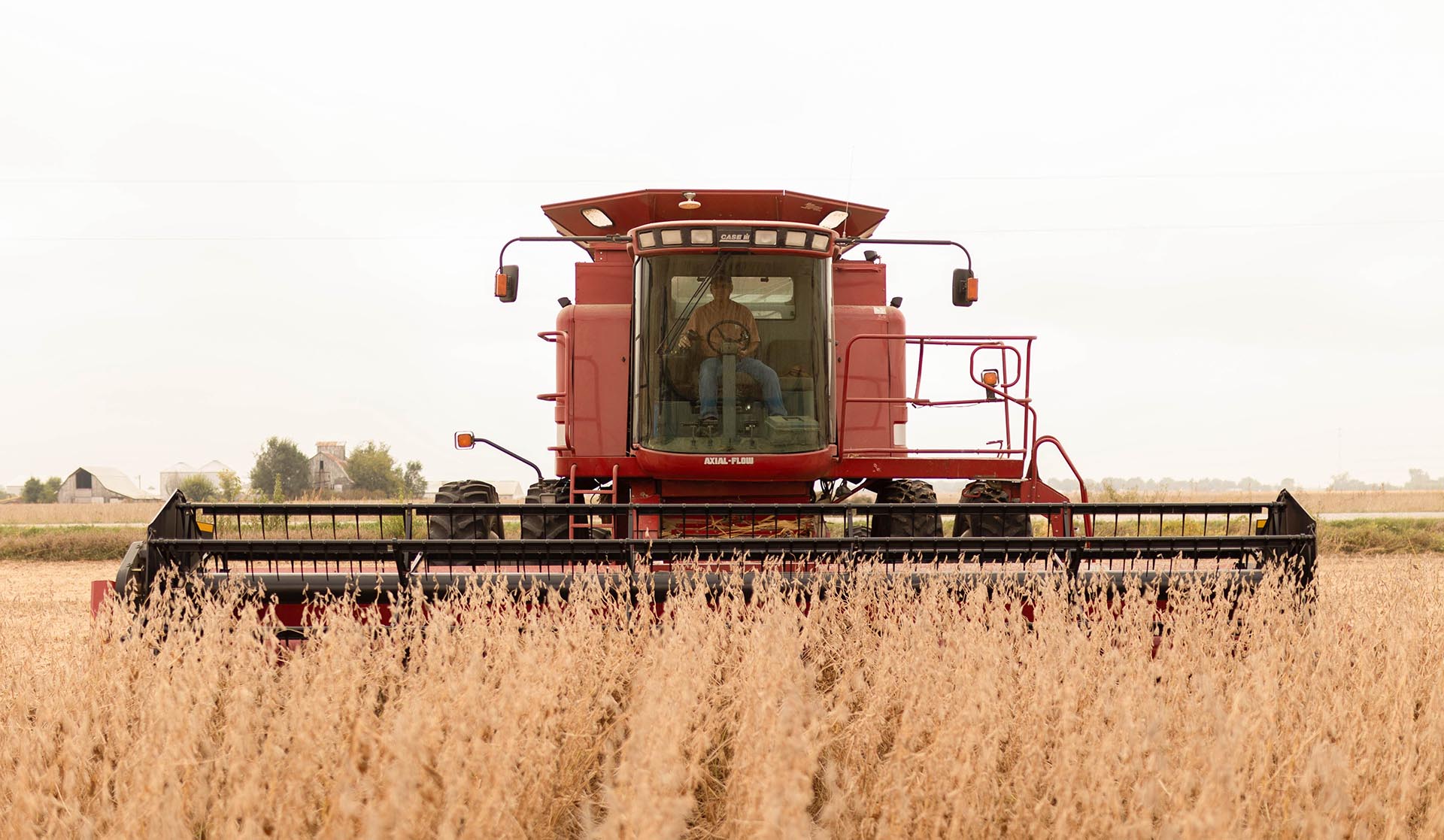
(Photo: Iowa Soybean Association / Joclyn Bushman)
Higher soybean yield projected in Iowa, report says
September 13, 2024
No major swings in the numbers following the release of September’s World Agricultural Supply and Demand Estimates (WASDE) report from the U.S. Department of Agriculture (USDA).
It was “neutral news” for soybeans and corn from the WASDE as well as the FSA Crop Acreage Report. However, the USDA anticipates historically huge crop numbers and shrugged off recent drought trends and minor cuts to both soybean and corn crop quality over the past few weeks.
In the WASDE memo, U.S. soybean supply and use changes for 2024/25 include lower beginning stocks, production and ending stocks. Lower beginning stocks reflect a slight increase to crush for 2023/24. Soybean production for 2024/25 is projected down 3 million bushels to 4.586 billion – although that would still be a record. Per-acre yield estimates were steady at 53.2 bushels per acres. With 2024/25 soybean crush and exports unchanged, ending stocks are projected at 550 million bushels, down 10 million bushels from last month.
The U.S. season-average soybean price is forecast unchanged at $10.80 per bushel. The soybean meal and soybean oil prices are also unchanged at $320 per short ton and 42 cents per pound, respectively.
For 2023-24 season, USDA lowered ending stocks by 5 million bushels to 340 million bushels – that change was due to the crush increase. The national average farm gate price also unchanged at $12.50 per bushel.
There were some revisions to individual states, including Iowa.
The USDA raised Iowa’s state yield to 63 bushels per acre – that’s a 3% increase from August.
Other states also saw shifting numbers.
The USDA lowered the Ohio yield estimate by 6.8%, now at 55 bushels per acre; Tennessee was revised 6% lower, to 46 bushels per acre; and Louisiana’s yield was increased 6% to 52 bushels per acre.
Corn numbers
Meanwhile, corn production information also was released in the report. Some takeaways included:
- USDA’s corn outlook slightly raised estimates for 2024 corn production to 15.186 billion bushels – a near-record. Analysts were expecting the agency to move in the opposite direction.
- USDA also unexpectedly raised per-acre yield estimates to 183.6 bushels per acre.
- Lowered ending stocks to 2.057 billion bushels. Analysts on average expected a downward revision closer to 2.02 billion bushels. Estimated ending stocks are up 13% from 2023/24 and would be the highest in six years.
- Season-average price for farmers faded another 10 cents lower, to $4.10 per bushel.
- South American corn production – no changes estimated; Brazilian corn estimates at 4.803 billion bushels. Argentine corn estimates at 1.968 billion bushels.
Global soybean production steady
Meanwhile, South American production figures were also steady in the WASDE report. Brazilian production remained unchanged at 5.22 billion bushels; Argentina was down slightly to 1.767 billion bushels. If realized, Brazil’s forecasted 2024/25 soybean crop could rise to 6.210 billion bushels – that would be a 10.5% year-over-year increase and an all-time record, according to the report.
Soybean production was raised 600,000 tons on higher production for Paraguay and Canada partly offset by lower output for the European Union (EU) and Serbia. Production for Paraguay is increased for 2022/23 through 2024/25 on higher planted area.
Production in Paraguay for 2023/24 is raised to reflect the strong pace of exports and crush to date. Global soybean trade for 2024/25 is increased to 181.6 million tons on higher exports for Paraguay and imports for Argentina. Global soybean ending stocks are increased 300,000 tons to 134.6 million as higher stocks for Argentina and Canada are partly offset by lower stocks for the United States and the EU.
Reports align with farmer expectations
As he prepares for the upcoming harvest in the next couple of weeks, Iowa Soybean Association (ISA) Board President-Elect Tom Adam of Harper says these numbers reflect what most farmers already know.
“At this point, it’s only a slightly favorable reaction on the soybean side,” he says. “It gives confirmation to what we were expecting – a large crop, a large carry-out.
“Unfortunately, it will still be a burden on our prices for some time to come.”
WASDE, Adam says, represents a “smorgasbord of reports that we all look at; and when they all point in the same direction, it’s an affirmation to what we’re seeing and hearing.”
Fellow ISA Board Director Aimee Bissell from Bedford agrees as she nears the end of her first week of harvesting.
“The USDA was predicting a big crop, and from what we’re seeing, there really haven’t been any surprises,” she says. “I really do think it’s going to be a big crop.”
Bissell says WASDE numbers, while never definitive, offers a good snapshot of what is going on in America’s farm fields.
“And as producers, we have to pay attention (to the USDA WASDE report) as it does help to drive the market,” she says.
“Overall, it will come down to what the combines say for final U.S. yield and what the weather and production look like in South America during their growing season,” says Grant Kimberley, ISA’s senior director of market development. “It will take a major production surprise or demand catalyst beyond what we already anticipate, to break us out of this trading range. These lower prices should continue to spur more demand and hopefully over time that starts to eat away at the large surpluses.”
Brock Johnston contributed to this report.
Back